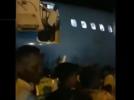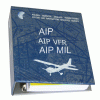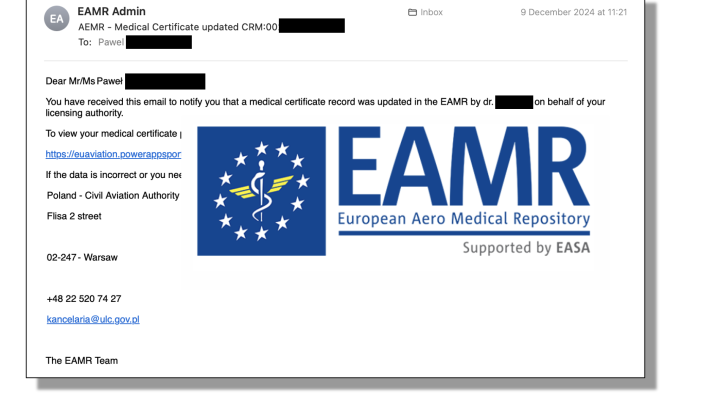Narodowe KWT: Jaka jest minimalna wysokość samolotu w nocy, zgodnie z SERA?
Narodowe KWT (Kontrola Wiedzy Teoretycznej) to ogólnopolski projekt z podstawowej wiedzy na temat przepisów. Do udziału w teście zapraszamy wszystkich pilotów, uczniów pilotów oraz urzędników wykonujących pracę na rzecz ogólnie pojętego lotnictwa. Być może podstawowa wiedza przyda się również w miejscu gdzie tworzy się przepisy.
Dziękujemy za udział w KWT.
Prawidłowa odpowiedź to: 3. a) 3790ft AMSL b) 1890ft AMSL
Uzasadnienie:
Zgodnie z SERA (rozporządzenie wykonawcze UE 923/2012) w naszym przypadku, obowiązuje przepis (c), dotyczący minimalnej wysokości lotu w nocy.
Z udzielonych odpowiedzi, wynika, że zapamiętaliśmy poprawnie wysokości. Ale! okazało się, że często nie pamiętamy, że wysokość dotyczy najwyższej przeszkody w promieniu 8km, a nie elewacji terenu. Przy okazji, prosimy zwrócić uwagę, na wartości wysokość przeszkód (dlatego nie odpowiedź 4.). Zgodnie z Ankesem 4 ICAO, wysokości przeszkody prezentowane są jako dwie wartości:
- zwykle1 większa (górna) to wysokość bezwzględna AMSL (względem uśrednionego poziomu morza)
- zwykle1 mniejsza (dolna) to wysokość względna, czyli po prostu wysokość przeszkody
Druga sprawa. Trochę aby wprowadzić w błąd, dodaliśmy odpowiedź 2. z tzw. połówkowym poziomem lotu (np. lecąc na zachód z kursem magnetycznym, stosujemy parzysty początek poziomu lotu + 500ft jako, że w przelotach VFR stosujemy połowy poziomów).
Ale uwaga! poziomy lotów (g) powinny być stosowane na wysokościach większych niż 900m (3000m) nad terenem, a nie AMSL. W przypadku samolotu na pozycji a) zsumowana wysokość bezwzględna to 3790ft AMSL, ale dalej dalej to 2000ft AGL. Stąd nie stosuje się w przypadku pozycji a) systemu z tabeli poziomów lotu.
SERA.5005 Przepisy wykonywania lotu z widocznością
c) Jeżeli właściwy organ wyda odpowiednie przepisy, loty VFR mogą być wykonywane w nocy pod warunkiem stosowania się do następujących wymogów:
(...)
5) z wyjątkiem przypadków, gdy jest to konieczne ze względu na start lub lądowanie albo gdy zostało udzielone specjalne zezwolenie przez właściwy organ, lot VFR w nocy jest wykonywany na poziomie odpowiadającym co najmniej minimalnej bezwzględnej wysokości lotu ustanowionej przez państwo, nad którego terytorium wykonywany jest przelot, a gdy nie jest ona ustalona, lot ten jest wykonywany:
(i) nad terenem wyżynnym lub nad obszarami górskimi – na poziomie co najmniej 600 m (2 000 ft) nad najwyższą przeszkodą znajdującą się w promieniu 8 km od przypuszczalnej pozycji statku powietrznego;
(ii) nad terenem innym niż wymieniony w ppkt (i) – na poziomie co najmniej 300 m (1 000 ft) nad najwyższą przeszkodą znajdującą się w promieniu 8 km od przypuszczalnej pozycji statku powietrznego.
(...)
g) Jeżeli w zezwoleniach kontroli ruchu lotniczego nie wskazano inaczej lub właściwy organ nie określił inaczej, loty VFR w przelotach poziomych wykonywanych powyżej 900 m (3 000 ft) nad ziemią lub wodą, lub na wyższym poziomie określonym przez właściwy organ, są wykonywane na poziomie przelotu odpowiednim dla danej linii drogi zgodnie z tabelą poziomów przelotu zamieszczoną w dodatku 3.
SERA.5005 Visual flight rules
(c) When so prescribed by the competent authority, VFR flights at night may be permitted under the following conditions:
(...)
(5) except when necessary for take-off or landing, or except when specifically authorised by the competent authority, a VFR flight at night shall be flown at a level which is not below the minimum flight altitude established by the State whose territory is overflown, or, where no such minimum flight altitude has been established:
(i) over high terrain or in mountainous areas, at a level which is at least 600 m (2 000 ft) above the highest obstacle located within 8 km of the estimated position of the aircraft;
(ii) elsewhere than as specified in i), at a level which is at least 300 m (1 000 ft) above the highest obstacle located within 8 km of the estimated position of the aircraft.
(..)
(g) Except where otherwise indicated in air traffic control clearances or specified by the competent authority, VFR flights in level cruising flight when operated above 900 m (3 000 ft) from the ground or water, or a higher datum as specified by the competent authority, shall be conducted at a cruising level appropriate to the track as specified in the table of cruising levels in Appendix 3.
Kliknij aby zobaczyć wszystkie KWT
1) z wyjątkiem obszarów depresji

















Komentarze